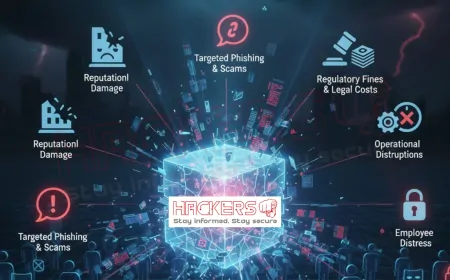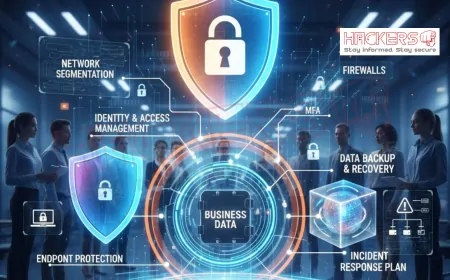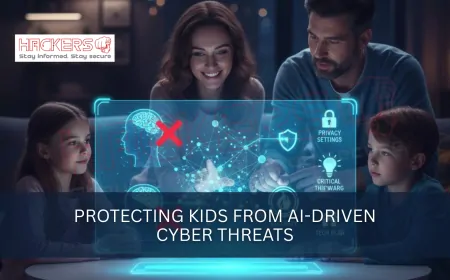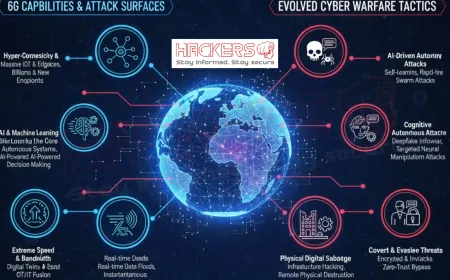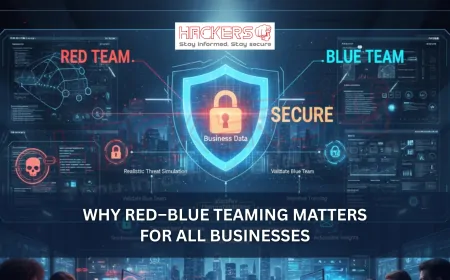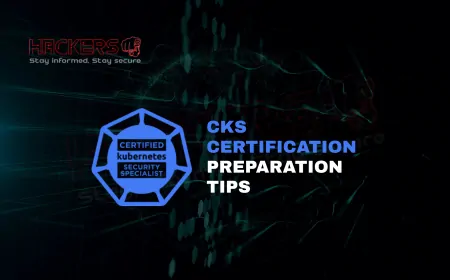How Will Quantum Computing Rewrite Cybersecurity Rules?
Imagine a computer so powerful that it can crack passwords in seconds, break encryption used by banks and governments, and solve problems that would take today’s supercomputers billions of years. That future is not science fiction. It is quantum computing. And it is coming faster than most people realize. While this technology promises breakthroughs in medicine, climate modeling, and artificial intelligence, it also poses an existential threat to digital security as we know it. This blog explains, in plain language, what quantum computing is, why it terrusts current cybersecurity, and what we must do now to prepare. The rules of the game are about to change. Are you ready?

Table of Contents
- Introduction
- What Is Quantum Computing?
- The Quantum Threat to Encryption
- How Today’s Encryption Fails
- When Will Quantum Computers Arrive?
- What Is Post-Quantum Cryptography?
- How to Transition to Quantum-Safe Systems
- The Bright Side: Quantum-Powered Security
- Conclusion
- Frequently Asked Questions
What Is Quantum Computing?
Traditional computers use bits. A bit is like a light switch: it is either on (1) or off (0). Quantum computers use qubits. Thanks to a property called superposition, a qubit can be both 0 and 1 at the same time. Add another property called entanglement, and qubits can influence each other instantly, no matter the distance.
This means quantum computers can explore millions of possibilities at once. A problem that takes a regular computer 10,000 years might take a quantum machine just minutes. Google, IBM, and startups like Rigetti are building these machines today. They are not replacing your laptop yet, but they are getting better fast.
- Classical bit: 0 or 1
- Quantum qubit: 0, 1, or both simultaneously
- Superposition: being in multiple states at once
- Entanglement: linked qubits acting as one
The Quantum Threat to Encryption
Most online security relies on math problems that are easy to solve one way but nearly impossible to reverse. For example, multiplying two large prime numbers is simple. But factoring the result back into the original primes? That is incredibly hard. This is the foundation of RSA encryption, used in banking, email, and VPNs.
A sufficiently powerful quantum computer running Shor’s algorithm can factor those numbers in hours. Suddenly, your encrypted data, passwords, and digital signatures are exposed. Even worse: attackers could record encrypted traffic today and decrypt it later when quantum machines exist. This is called “harvest now, decrypt later.”
How Today’s Encryption Fails
Not all encryption is equally at risk. Symmetric encryption like AES (used in Wi-Fi and file encryption) is more resilient. But public-key systems like RSA, ECC, and Diffie-Hellman are vulnerable.
| Encryption Type | Current Use | Quantum Risk Level | Recommended Action |
|---|---|---|---|
| RSA (2048-bit) | SSL/TLS, digital signatures, SSH | High (breakable by Shor’s) | Replace with PQC |
| ECC (Elliptic Curve) | Bitcoin, mobile security | High (Shor’s applies) | Migrate urgently |
| AES-256 | Disk encryption, VPNs | Medium (Grover’s halves strength) | Double key size if possible |
| SHA-256 | Blockchain, passwords | Low to medium | Monitor, consider SHA-512 |
When Will Quantum Computers Arrive?
Experts disagree on exact dates, but the consensus is clear: cryptographically relevant quantum computers (CRQCs) could emerge between 2030 and 2040. IBM plans a 100,000-qubit system by 2033. Google and China are investing billions. Even if it takes longer, the “harvest now, decrypt later” risk means data encrypted today could be exposed in a decade.
- 2025 to 2030: Early quantum advantage in specific tasks
- 2030 to 2035: First potential breaks of RSA-2048
- 2035+: Widespread quantum decryption possible
Governments are acting. The U.S. NIST began standardizing post-quantum algorithms in 2016. In 2024, they released the first three quantum-resistant standards.
What Is Post-Quantum Cryptography?
Post-quantum cryptography (PQC) uses math that even quantum computers cannot break efficiently. These algorithms rely on problems like lattice math, hash functions, or code-based encryption. They are not perfect, but they are our best defense.
NIST has selected four main algorithms:
- CRYSTALS-Kyber: key exchange (replaces Diffie-Hellman)
- CRYSTALS-Dilithium: digital signatures (replaces RSA/ECC)
- FALCON: compact signatures for IoT
- SPHINCS+: hash-based, stateless signatures
These are being integrated into TLS, VPNs, and blockchain protocols. Google and Cloudflare already support hybrid encryption combining classical and PQC methods.
How to Transition to Quantum-Safe Systems
Waiting is not an option. Start planning your quantum migration today. Here is a practical roadmap:
- Inventory all cryptographic systems: SSL, VPN, code signing, etc.
- Prioritize high-risk assets: financial systems, customer data, IP
- Test PQC in non-production environments
- Use crypto-agility: build systems that can swap algorithms easily
- Update certificates and keys with quantum-safe options
- Train teams on new standards and tools
- Partner with vendors supporting PQC (e.g., Cisco, Microsoft)
- Audit third-party dependencies: cloud, SaaS, APIs
Hybrid encryption is a smart bridge. It uses both old and new algorithms. If one fails, the other protects you.
The Bright Side: Quantum-Powered Security
Quantum is not just a threat. It is an opportunity. Quantum Key Distribution (QKD) uses physics, not math, to secure communications. Any attempt to intercept the key changes it, alerting both parties. China has a 2,000-km QKD network. Toshiba and ID Quantique sell commercial systems.
Quantum random number generators (QRNGs) create truly unpredictable keys. This strengthens passwords, blockchain, and encryption.
- QKD: unhackable communication links
- QRNG: perfect randomness for keys
- Quantum sensors: detect network tampering
Conclusion
Quantum computing will not end cybersecurity. It will transform it. Today’s unbreakable encryption will become tomorrow’s open book. But we are not defenseless. Post-quantum cryptography is ready. Standards are published. Tools are emerging. The organizations that act now will survive the quantum storm. Those that wait will face chaos: stolen data, broken trust, and regulatory wrath. Start your quantum readiness journey today. Inventory your systems. Test new algorithms. Train your teams. The future is coming. Be the one writing the new rules, not the one scrambling to catch up.
Frequently Asked Questions
What is quantum computing in simple terms?
It is a new kind of computer that uses quantum physics to solve certain problems much faster than regular computers. Instead of bits (0 or 1), it uses qubits that can be both at once.
Will quantum computers break all encryption?
No. Only public-key encryption like RSA and ECC. Symmetric encryption like AES is more resistant, though key sizes may need to double.
What is Shor’s algorithm?
A quantum algorithm that can factor large numbers quickly. This breaks RSA and ECC encryption, which rely on factoring being hard.
What is Grover’s algorithm?
It speeds up searching unsorted data. It weakens symmetric encryption and hashing by reducing security by half (e.g., AES-256 acts like AES-128).
When will quantum computers break encryption?
Possibly by 2030 to 2035. No one knows exactly, but the risk of “harvest now, decrypt later” means we must prepare today.
What is post-quantum cryptography?
New encryption methods based on math problems that resist both classical and quantum attacks. NIST has standardized several.
Is AES safe from quantum computers?
AES-256 is still strong, but AES-128 may be vulnerable. Use AES-256 or larger keys for long-term secrets.
Should I replace RSA now?
Not immediately, but plan to. Use hybrid systems with PQC for critical data. Full migration should begin within 3 to 5 years.
What is crypto-agility?
The ability to quickly switch encryption algorithms without rebuilding systems. It is essential for quantum readiness.
Can blockchain survive quantum computing?
Yes, but not with ECC. Bitcoin and Ethereum are exploring PQC signatures. Early movers will be safer.
What is Quantum Key Distribution?
A method using quantum physics to share encryption keys. Eavesdropping changes the key, so it is detected instantly.
Do I need a quantum computer to use PQC?
No. Post-quantum algorithms run on regular computers. You can deploy them today using existing hardware.
Which industries are most at risk?
Finance, healthcare, government, defense, and any sector with data needing protection for 10+ years.
Is Google using quantum-safe encryption?
Yes. Google Chrome and Cloudflare support hybrid post-quantum key exchange in TLS.
How much will quantum migration cost?
It varies. Software updates are cheaper than hardware. Start with high-value systems. Budget 1 to 3 years for full transition.
Can attackers use quantum computers now?
Not for breaking encryption. Current machines have too few stable qubits. But they are improving rapidly.
What should CISOs do today?
Form a quantum task force. Inventory crypto assets. Test PQC in labs. Update policies. Educate leadership.
Is password hashing affected?
Yes, slightly. Grover’s algorithm halves hash strength. Use stronger functions like Argon2 or increase rounds.
Will VPNs need to change?
Yes. Replace Diffie-Hellman and RSA with Kyber or hybrid modes. Many vendors already support this.
Where can I learn more about PQC?
Visit NIST’s PQC project page, ETSI Quantum-Safe Cryptography group, or Cloud Security Alliance’s Quantum-Safe Security Working Group.
What's Your Reaction?












